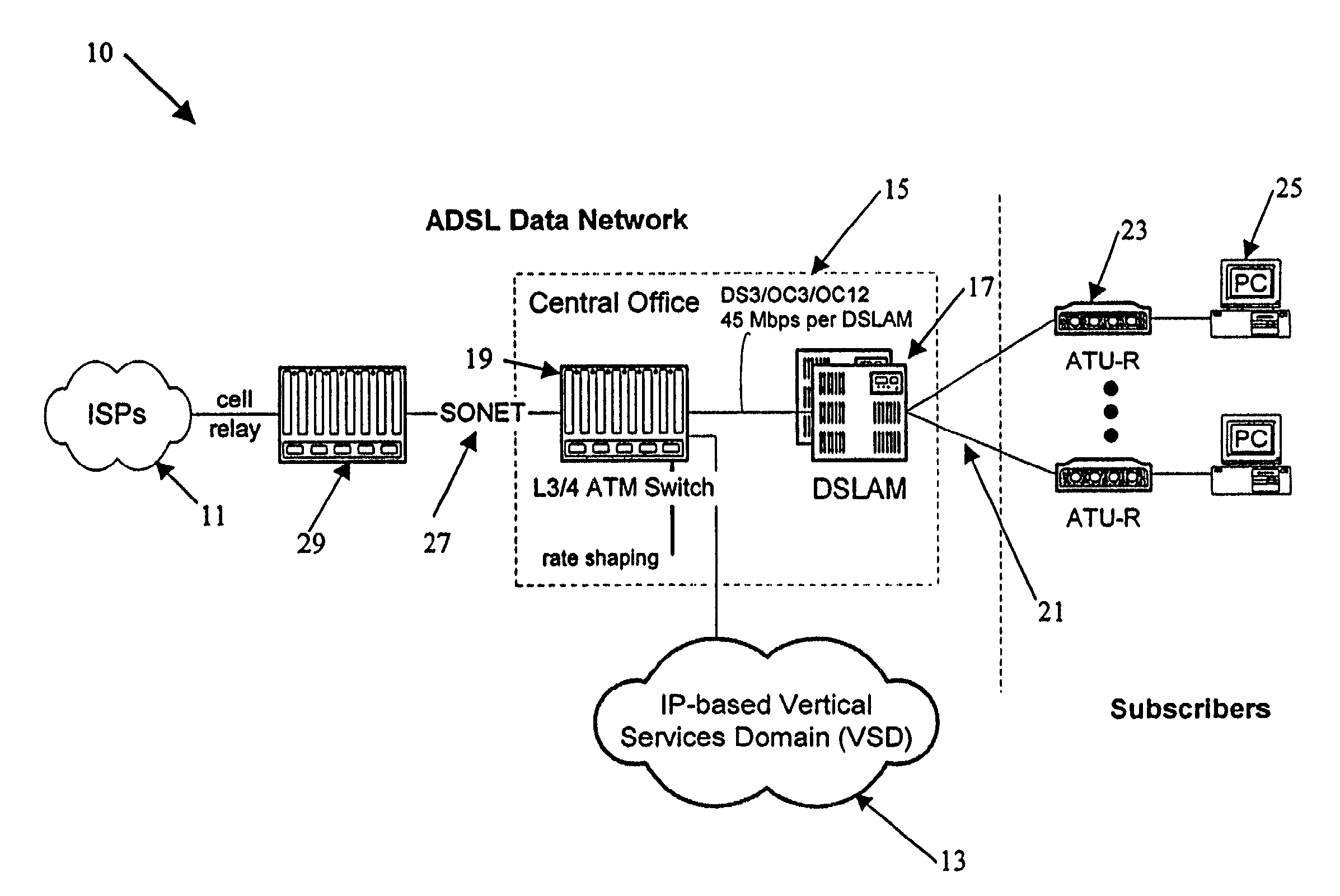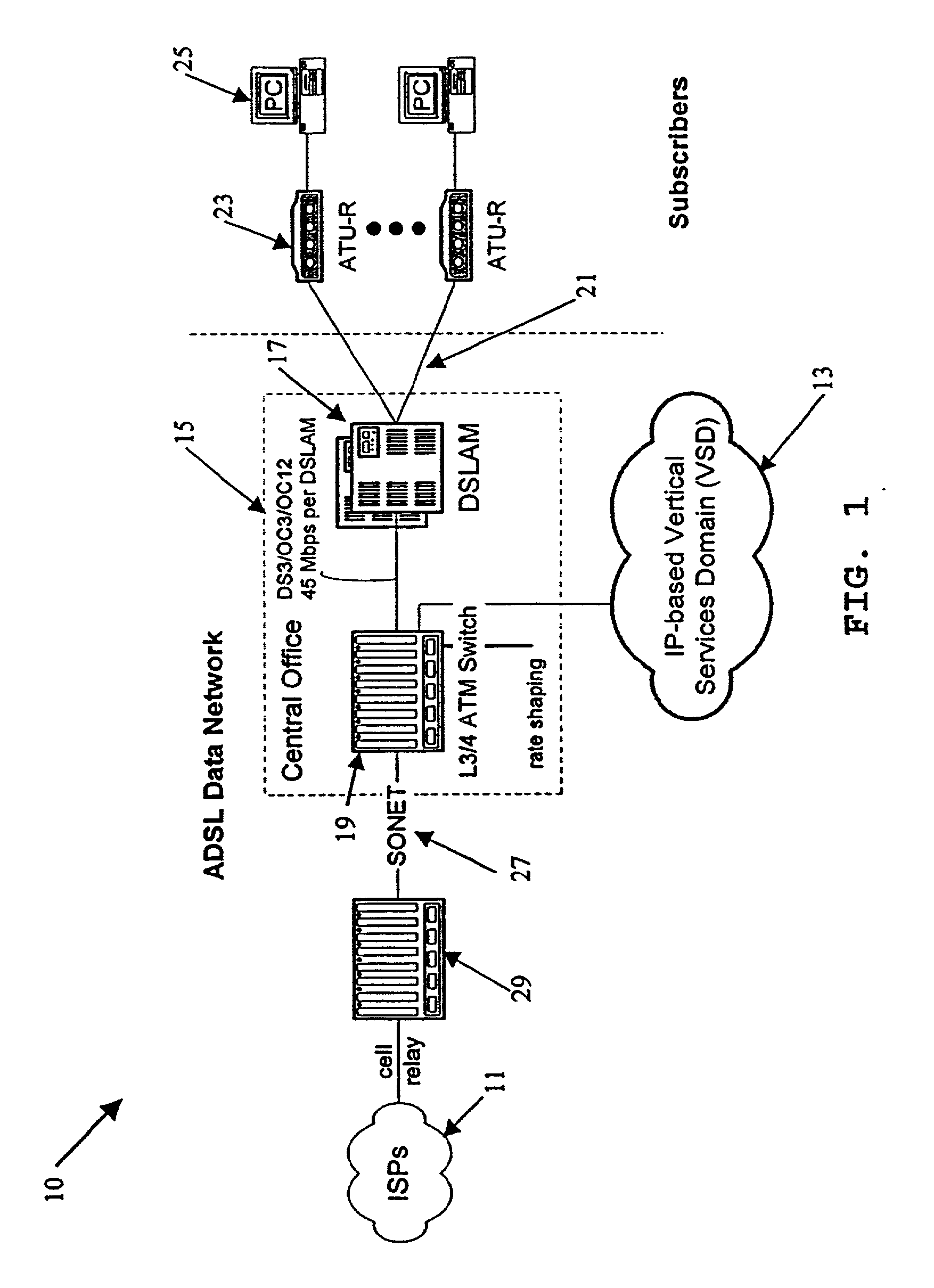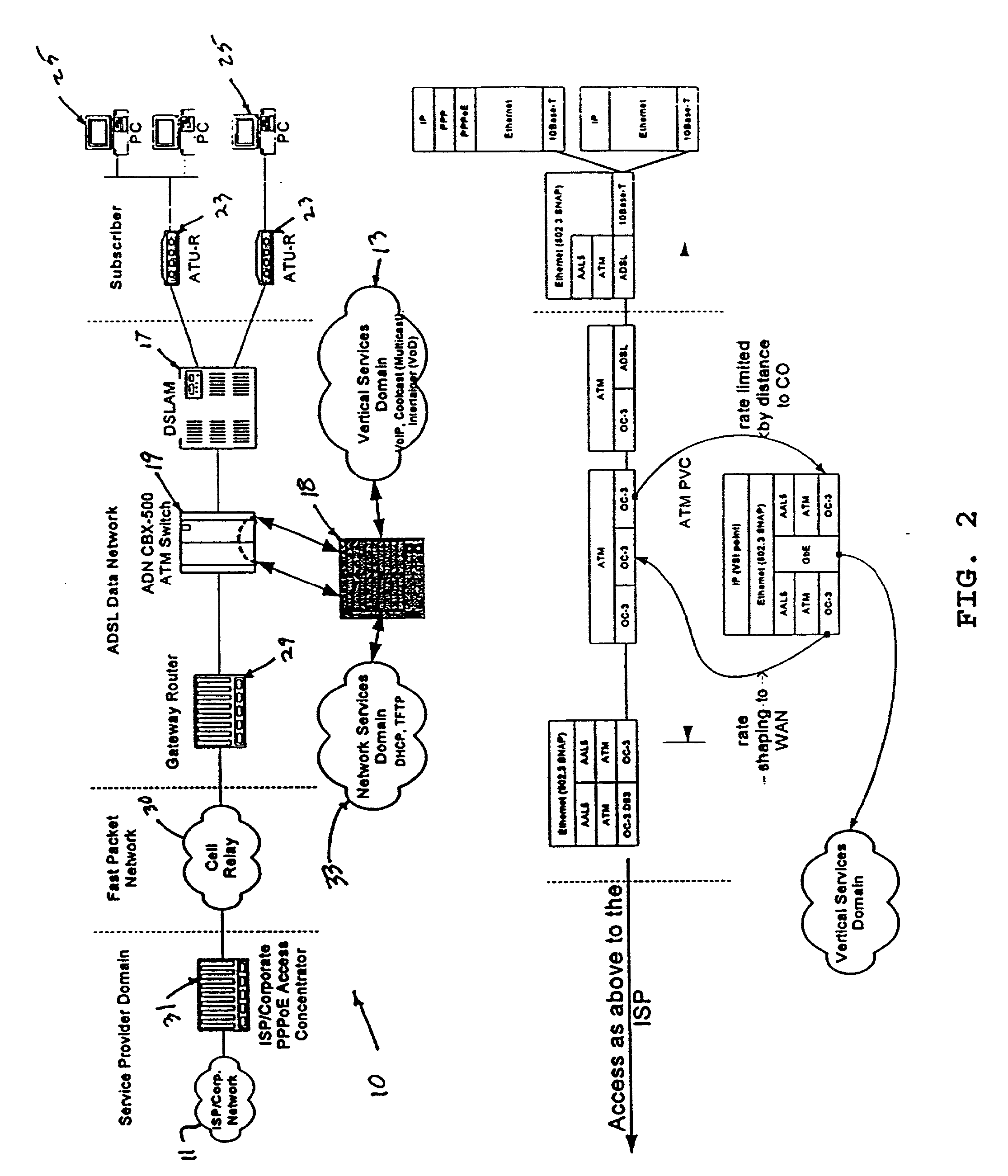Vertical Services Integration Enabled Content Distribution Mechanism
a content distribution and vertical service technology, applied in the field of data communication services, can solve the problems of high bandwidth, high cost of high-speed links enabling such wide-area access from a lan domain, and only justified for hi-end commercial users, so as to improve the cost effectiveness of data networks, increase bandwidth available, and reduce demand
- Summary
- Abstract
- Description
- Claims
- Application Information
AI Technical Summary
Benefits of technology
Problems solved by technology
Method used
Image
Examples
Embodiment Construction
[0064] The inventive network architecture introduces QoS into the ADN, in a manner that enables the delivery of sophisticated and demanding IP-based services to subscribers. The architecture does not affect existing Internet tiers of service such that the promised rates for such access appear the same as offered today. Also, the new architecture is cost-effective in terms of initial costs, build-out, and ongoing operations. The architecture utilizes an access switch or router capable of examining and selectively forwarding packets based on a relatively higher layers of the protocol stack, that is to say based on information encapsulated within the layer-2 information utilized as the lowest level definition of connectivity through the network. The access switch enables segregation of upstream traffic by communication type and downstream aggregation of wide area traffic together with traffic from a local vertical services domain.
[0065] In the downstream direction, the switch aggregat...
PUM
 Login to View More
Login to View More Abstract
Description
Claims
Application Information
 Login to View More
Login to View More - R&D
- Intellectual Property
- Life Sciences
- Materials
- Tech Scout
- Unparalleled Data Quality
- Higher Quality Content
- 60% Fewer Hallucinations
Browse by: Latest US Patents, China's latest patents, Technical Efficacy Thesaurus, Application Domain, Technology Topic, Popular Technical Reports.
© 2025 PatSnap. All rights reserved.Legal|Privacy policy|Modern Slavery Act Transparency Statement|Sitemap|About US| Contact US: help@patsnap.com



